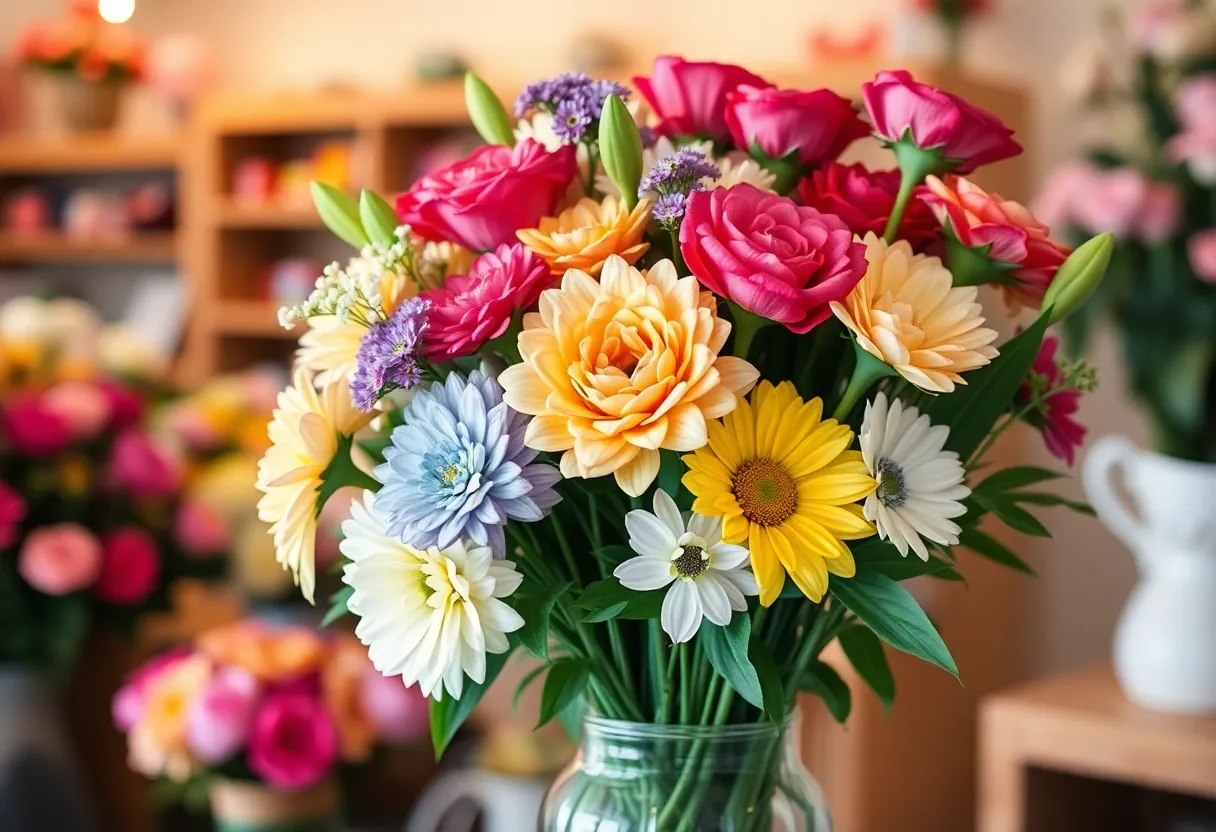News Summary
As Mother’s Day approaches, American consumers may face increased floral gift costs from rising tariffs. Though certain tariffs are temporarily paused, many remain, leading to price hikes on imported flowers. About 80% of cut flowers in the U.S. come from imports, with notable increases in prices due to these tariffs. Florists anticipate budgetary challenges for events and weddings, prompting shoppers to consider supporting local growers amidst rising expenses.
San Diego, California – Rising Tariffs Impact Mother’s Day Flower Prices
As Mother’s Day approaches, American consumers are facing the possibility of increased costs for floral gifts due to rising tariffs. The recent adjustments in trade policy could result in significant price hikes for the flowers often gifted on this special occasion.
A May 5 article highlighted that the Trump administration had temporarily paused “reciprocal tariffs,” which ranged from 20% to 49% on imports from over 70 countries. This suspension, set for 90 days starting April 9, 2025, may provide a short respite, but other tariffs remain intact, notably a 10% baseline on all imported goods and a 25% tariff on certain goods from Mexico and Canada. Notably, goods imported from China are subject to a staggering 145% tariff.
These tariffs have already led to rising flower prices, an issue that is particularly pertinent as Mother’s Day falls on May 11 this year. For many consumers, this means that traditional gifts such as cut flowers could become markedly more expensive.
Data shows that a significant portion of cut flowers sold in the United States—approximately 80%—are imported. In 2023, the U.S. imported around $185,000 worth of cut flowers from Canada and Mexico, with $3,200 coming from China, while other nations contributed $2.14 million. The importation of cut greens also factors into the increasing costs, accounting for another $123,000 from regional sources.
Florists across the country have noted these price increases, which may affect the budgets of those planning weddings and events. Reports indicate that wedding floral prices could increase by anywhere from 10% to 25% or more due to these tariff-related costs. Notably, the impact extends beyond just flowers; floral supply costs are on the rise as well, as many of the containers and products used by florists, including vases and baskets, are also imported from China and are subject to the same steep tariffs.
The Consumer Federation of America has pointed out that the imposition of the baseline 10% tariff constitutes a significant federal tax increase, disproportionately affecting lower and middle-income consumers. As increased costs ripple through the flower supply chain, shoppers are encouraged to consider purchasing flowers grown within the United States. Local flower farms, particularly in regions such as Asheville, North Carolina, provide an alternative to rising costs associated with imported flowers.
With Mother’s Day drawing near, the demand for floral gifts and thoughtful alternatives is on the rise, as evidenced by increased online searches for gift ideas. Many consumers are seeking unique experiences, with Asheville being highlighted for its artistic and scenic offerings, ranking 14th on a list of desirable “mocation” destinations.
Asheville is home to attractions such as the Biltmore Estate and River Arts District galleries, making it a popular choice for those looking to celebrate the occasion with meaningful gifts and experiences. While many florists prepare months in advance for peak seasons like Valentine’s Day and Mother’s Day, the influx of last-minute shoppers often leads to increased pressure on local businesses to meet demand. Sweet Bouquets Florist in South Asheville, for instance, is among those preparing to cater to this surge of customers.
Additionally, the picturesque Lake Junaluska, located near Asheville, offers a scenic retreat with a rich spiritual history and various outdoor activities, adding to the appeal of the area. As consumers plan their Mother’s Day celebrations, they must weigh the potential impact of tariffs on their floral expenditures and consider supporting local growers where possible.
In summary, the rising tariffs on imported goods are likely to drive up flower prices this Mother’s Day, prompting shoppers to explore domestic floral options amidst a fluctuating market.
Deeper Dive: News & Info About This Topic
HERE Resources
Asheville Celebrates Mother’s Day with Variety of Events
Additional Resources
- Blue Ridge Now: Mother’s Day Flowers and Tariffs
- WCCB Charlotte: Best Locations for Mother’s Day
- WLOS: Sweet Bouquets Florist
- Southern Living: Edible Flowers
- Wikipedia: Floristry
- Google Search: Mother’s Day Flowers 2025

Author: STAFF HERE ASHEVILLE WRITER
The ASHEVILLE STAFF WRITER represents the experienced team at HEREAsheville.com, your go-to source for actionable local news and information in Asheville, Buncombe County, and beyond. Specializing in "news you can use," we cover essential topics like product reviews for personal and business needs, local business directories, politics, real estate trends, neighborhood insights, and state news affecting the area—with deep expertise drawn from years of dedicated reporting and strong community input, including local press releases and business updates. We deliver top reporting on high-value events such as the Asheville Bread Festival, LEAF Festival, and mountain sports tournaments at Biltmore Estate. Our coverage extends to key organizations like the Asheville Area Chamber of Commerce and Explore Asheville Convention & Visitors Bureau, plus leading businesses in hospitality and brewing that power the local economy such as the Biltmore Estate and Sierra Nevada Brewing Company. As part of the broader HERE network, including HERECharlotte.com, HEREGreensboro.com, HERERaleigh.com, and HEREOBX.com, we provide comprehensive, credible insights into North Carolina's dynamic landscape.





